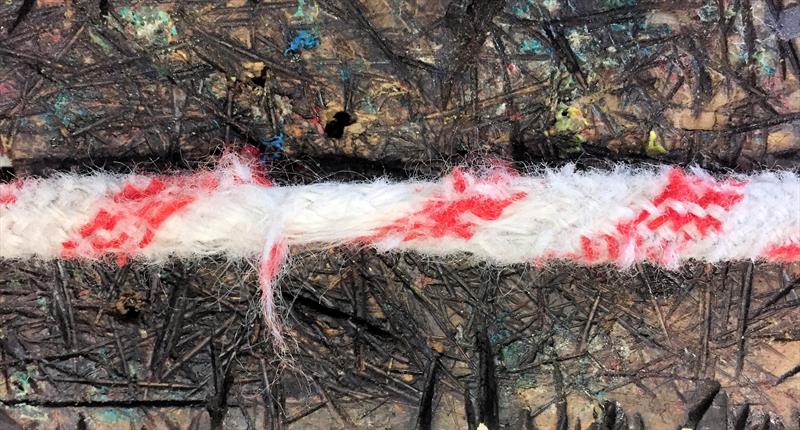
Have you reached the end of your rope?
by Paul Dyer 27 Apr 2017 14:37 BST
27 April 2017

A worn through rope cover © Marlow Ropes
Top 6 signs that say you need to replace
Paul Dyer, technical manager at Marlow Ropes, takes a look at how to inspect your ropes, and the key 'wear and tear' signs to look out for.
The first sail of the new season isn't a good time to uncover a problem with your boat's equipment. A thorough pre-season check is a must. It's also a good opportunity to replace anything nearing the end of its life before it fails on the water causing more damage, cost and danger.
A quick visual check of a rope won't tell the whole story, it's easy to miss a problem with a core or damage that's hidden from view. The best solution is to remove all the running rigging from the boat and inspect its entire length, only by doing this can you ensure that nothing's been missed.
In an ideal situation, Marlow recommend that the rigging is removed before packing the boat away - leaving mouse lines in place to aid re-installing the lines. Doing this will give you the whole winter to check the ropes and repair or replace anything that needs attention.
Even if you didn't remove the lines when you put the boat to bed, now's the time to get them off the boat and inspect them properly.
HOW TO INSPECT - PROPERLY
To inspect a rope, check a short section at a time, feel for inconsistencies, look for damage. If all is well - move on to the next section.
Here are the top 6 signs of rope damage to look out for:
1. CHANGES IN DIAMETER
Either lumps or thin sections could signify damage to the core.
2. ABRASION
Worn covers will eventually fail. Abrasion often matches up with other hardware on the boat. If there's a particular section of damage, make a note of where it is and identify what it corresponds to. Is the rope running over something it shouldn't be? Are the clutches, sheaves etc. in good condition? Does this section of rope require extra protection?
3. FUSION
When ropes run quickly over a surface under load, heat can be generated. This can cause the covers of ropes to become melted/fused, in extreme cased the cores can be damaged by this heat too.
4. STIFF SECTIONS
This could be a sign of core fusion; it can also indicate areas of rope that have been subject to abnormally high loads.
5. TERMINATIONS
Are splices in good condition? Are the bearing points damaged or worn? Is there any evidence of movement? Are whips in good condition?
6. FADING/ DISCOLORATION
This could be evidence of contamination, UV or chemical damage.
If in doubt about ropes, replace them. The consequences of things failing unexpectedly can far outweigh the cost. Don't leave it to chance, replace rather than regret.
Lets not forget the other areas of the boat as well. The running rigging works as a system in concert with the deck hardware. Now is the time to check and service this.
Check all the sheaves. Look for play in bearings. Just because it rotates freely without load doesn't mean it will spin when it matters. Play in bearings also means the loading isn't spread as the hardware designer intended and that can lead to catastrophic failures!
Ensure clutches and jammers are in good condition. Like the ropes, there's no substitute for removing the jaws and inspecting properly before re-lubing and assembling as per the manufacturer's recommendations. If any damage is found, re-check the corresponding section of rope.
Don't forget all the other ropes, lashings and straps on the boat. Jackstays, toe straps, and so on, these all need to be checked. A good way to ensure nothing is missed is to start at the bow and work back checking/replacing everything.
Guardrail lashings are often neglected. These are exposed to the sun and have a small diameter so they are particularly susceptible to UV damage. Look for faded colours or markers and powdery surface finish as clues to this type of damage.
Paul Dyer has over 20 years experience in the design, production, testing and use of fibre ropes. He has also worked on customised ropes for any number of fantastic applications, including boats for the America's Cup. For more information and advice visit www.marlowropes.com